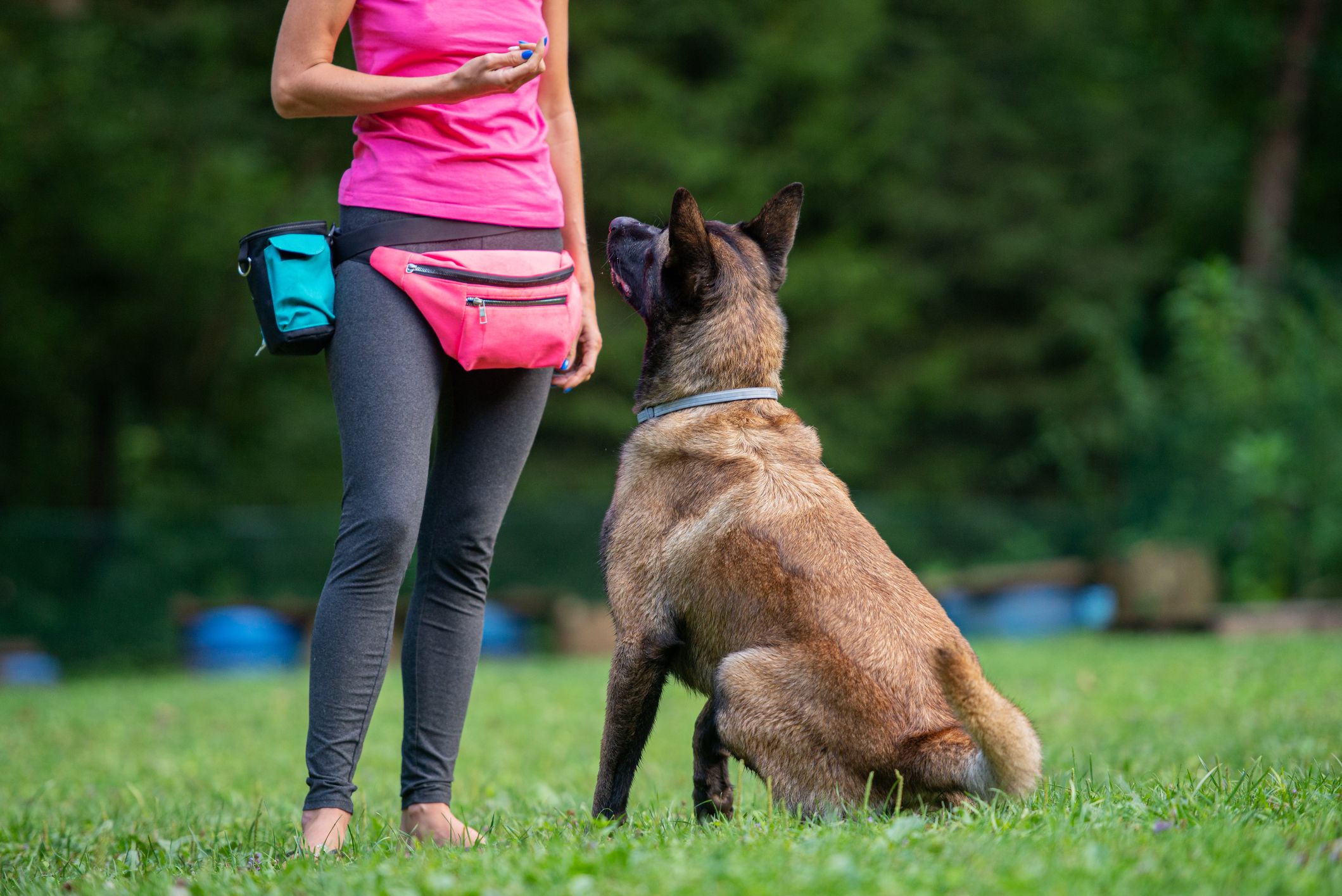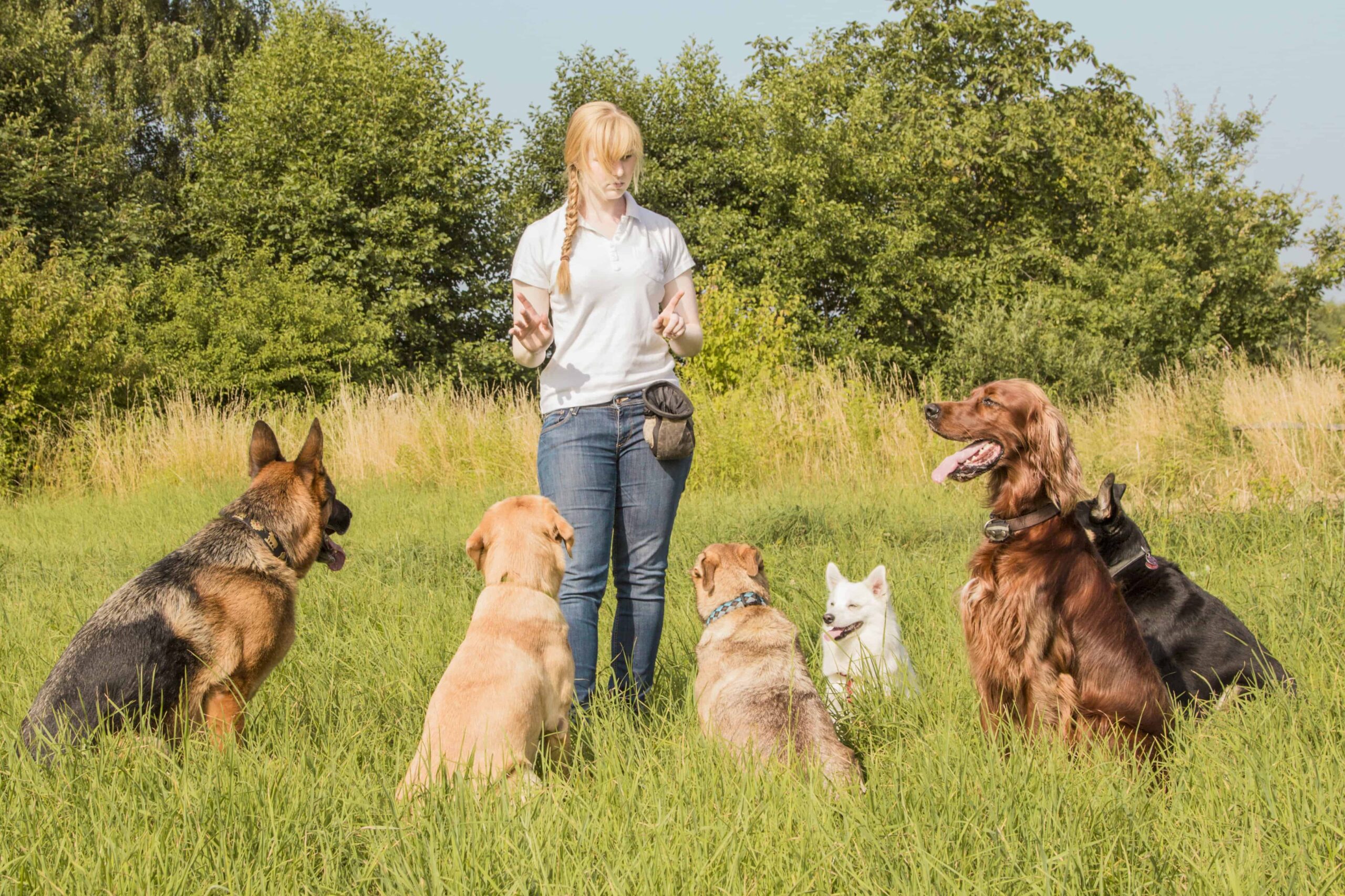Dog Training for First-Time Pet Owners: What You Need to Know
Dog Training for First-Time Pet Owners: What You Need to Know
Blog Article
Newbie's Overview to Effective Pet Training in the house
Successfully educating a pet at home requires a nuanced understanding of canine habits and reliable communication techniques. Developing clear training goals, utilizing top notch benefits, and keeping uniformity across relative are important components. Additionally, integrating training into everyday routines can enhance both involvement and retention. Lots of beginner instructors experience obstacles that may prevent development. To navigate these complexities successfully, it's essential to explore several essential elements that can change your strategy and bring about a harmonious relationship with your pet. What fundamental concepts should every novice grip to make sure success?
Recognizing Pet Actions
Recognizing dog behavior is necessary for reliable training and cultivating a harmonious connection between people and their canine companions. Pet dogs connect primarily via body language, vocalizations, and face expressions, making it important for proprietors to translate these signals precisely. Recognizing behaviors such as tail wagging, grumbling, or cowering can supply understandings into a pet dog's mood and objectives.

Typical behavioral concerns, such as hostility, anxiousness, or extreme barking, typically originate from misconceptions or unmet requirements. Observing and addressing these problems promptly can prevent acceleration and make certain a favorable training experience. By fostering a deep understanding of dog actions, owners can tailor their training methods to match their canine friends, ultimately resulting in a satisfied and well-behaved pet dog.
Necessary Training Devices
A well-appointed training area can substantially improve the efficiency of canine training at home. Necessary training devices make certain that both the canine and the fitness instructor can take part in productive sessions that foster learning and bonding.

Purchasing a strong chain and a comfy, well-fitting collar or harness is essential for security and control. These devices help establish boundaries and guarantee the canine continues to be secure throughout training. In addition, an assigned training area, without disturbances, aids concentration for both the fitness instructor and the pet dog.
Training help such as training pads, cones, or dexterity equipment can additionally improve the experience by introducing selection and challenges. Having a note pad or electronic application for tracking progress can be important, enabling you to keep in mind successes and areas for improvement. Utilizing these necessary tools will certainly produce a positive training atmosphere and lay the foundation for reliable discovering.
Creating a Training Regimen
Establishing a consistent training routine is important for efficient pet training at home. A well-structured regular not only aids in strengthening wanted behaviors but also provides your canine with a sense of safety and security and predictability. To develop an efficient training regular, begin by recognizing specific training objectives, such as basic commands, leash strolling, or housebreaking.
Choose a marked time every day for training sessions, ideally when your canine is responsive and alert. Sessions should be brief, about 5 to 15 minutes, to keep emphasis and avoid fatigue. Consistency in timing and atmosphere will improve your pet's discovering experience.
Include training into daily activities to strengthen abilities. Technique commands during walks or mealtime, which integrates finding out right into natural routines. Furthermore, remain versatile and change the regular as essential, fitting your pet's energy degrees and state of mind.
Positive Reinforcement Strategies
Favorable reinforcement methods are fundamental to efficient pet training, promoting preferred actions with incentives as opposed to punishment. This technique uses favorable stimuli, such as treats, praise, or playtime, to encourage pets to repeat details activities. The keystone of this method is timing; rewards need to be provided quickly following the wanted behavior to develop a clear organization.
When carrying out favorable support, it is necessary view website to pick rewards that are inspiring for your canine. High-value treats, such as little pieces of poultry or cheese, can be particularly effective throughout training sessions. Additionally, differing the rewards can maintain your canine's interest and excitement.
Beginning with basic commands, like "rest" or "remain," and progressively progress to a lot more complex tasks. Uniformity is key; ensure that all relative utilize the very same commands and benefit systems to avoid confusion.
Furthermore, it is crucial to remain individual and prevent frustration. Pet dogs, like humans, discover at their own speed. By fostering an encouraging training atmosphere through favorable reinforcement, you can improve your canine's understanding experience while enhancing the bond in between you and your furry friend, preparing for effective training end results.
Typical Educating Challenges
While educating a pet in your home can be a gratifying experience, it commonly features a set of typical challenges that can check both persistence and uniformity. One prevalent problem is interruption. Canines may end up being quickly sidetracked by noises, activities, or perhaps fragrances in their atmosphere, making it tough to keep their emphasis throughout training sessions.
One more difficulty is disparity in commands and reinforcement. If family participants use different signs or incentives, it can puzzle the canine and prevent progress. Establishing a unified method is vital for efficient interaction.
Additionally, pets can experience frustration or stress, particularly if they do not comprehend what is expected of them. This can result in unfavorable habits, such as barking or chewing.
Lastly, the timing of support is essential (Dog training). Postponed rewards can diminish the effectiveness of positive support, as dogs might stop working to connect the habits with the incentive
Getting rid of these challenges requires dedication, clear communication, and an organized training plan. Identifying and addressing these typical challenges will pave the way for an extra pleasurable and effective training experience at home.
Conclusion
In final thought, successful dog training at home demands an extensive understanding of canine behavior and effective communication methods. By establishing clear training goals and utilizing top quality deals with together with positive reinforcement, the training procedure comes to be content a lot more satisfying for both the pet and the instructor.
Establishing a regular training routine is vital for efficient canine training at home.Positive support strategies are essential to reliable canine training, promoting wanted behaviors through benefits instead than penalty (Dog training). By fostering a supportive training environment with positive reinforcement, you can enhance your canine's discovering experience while helpful hints strengthening the bond between you and your hairy buddy, laying the groundwork for effective training outcomes
In verdict, effective pet dog training at home demands an extensive understanding of canine actions and effective communication approaches. By establishing clear training goals and using high-grade deals with together with favorable support, the training process becomes more rewarding for both the pet dog and the trainer.
Report this page